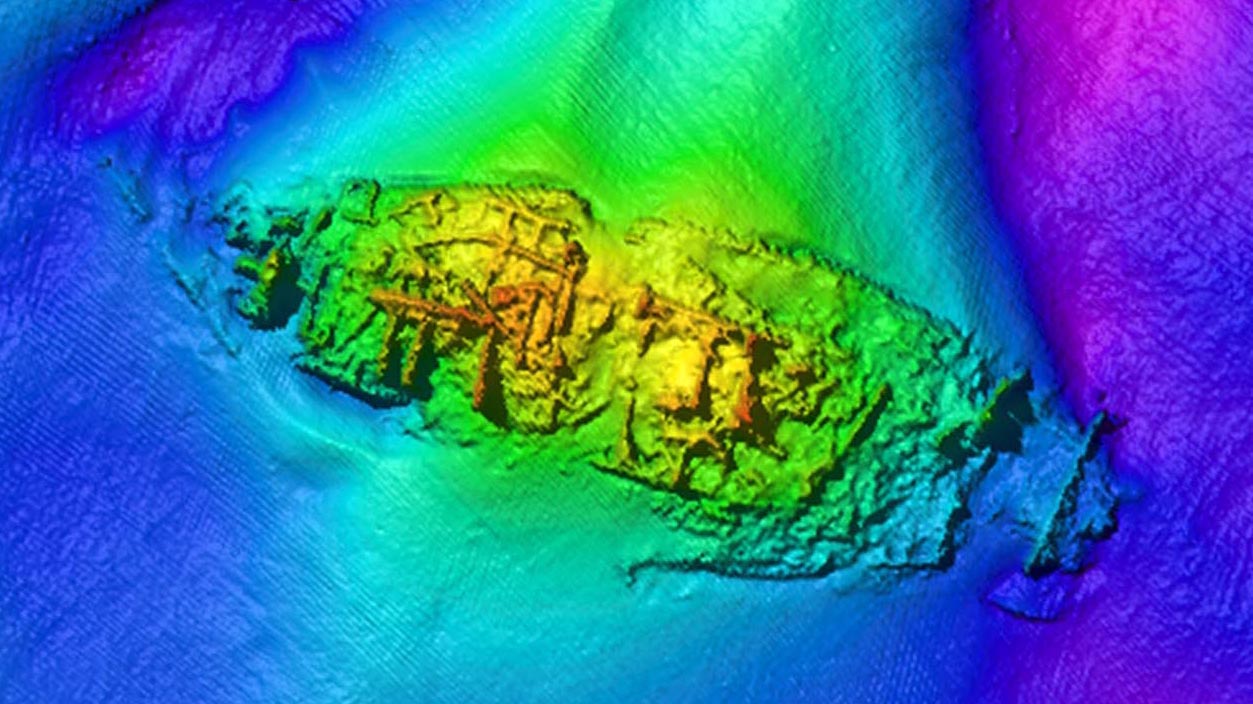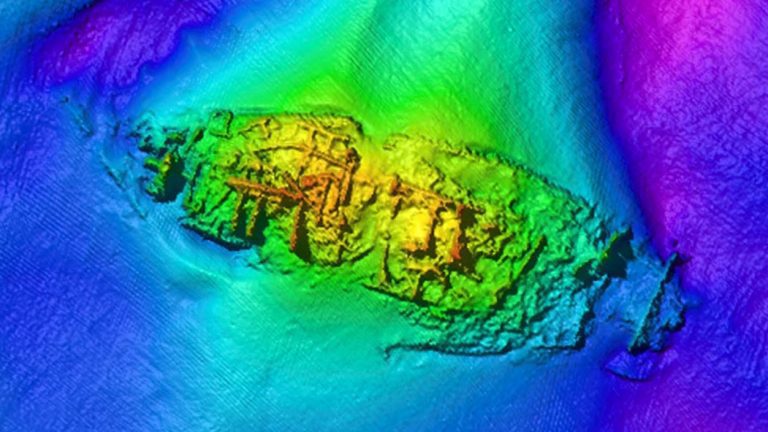DIVING NEWS
Two British mystery wrecks protected

Multibeam image of GAD23. (Picture: MSDS Marine & Pascoe Archaeology Services)
Two well-preserved but unidentified 19th-century merchant shipwrecks have been granted protection on the recommendation of Historic England.
The scheduling of the wrecks by the Department for Digital, Culture, Media & Sport allows recreational scuba divers to visit them, but their contents are protected by law and must remain in situ.
The vessels are referred to as GAD23 and WA08. The first is a rare survival of a once-common type of timber cargo sailing vessel of the mid-to-late 19th century. It was transporting a large consignment of coal when it sank on the Goodwin Sands off Sandwich in Kent.
GAD23 is also known as the Bowsprit wreck, because the spar from which ropes helped to support the foremast has survived. The near-complete wreck rests on its keel with the hull and iron objects such as the pump intact. The coal it contains could be preserving the remains of the hold and lower hull. Much of the starboard side is covered by sand but the wreck is at risk of exposure from shifting sands.
More than 5000 wrecks recorded in English waters were involved in the coal trade that reached its height in the 18th and 19th centuries, when England was the world’s leading producer and exporter to Europe, says HE. Only 26 of these vessels have been identified as sail-powered colliers, and only one other such ship, sunk at Seaton Carew in Co Durham, has been granted protection.
The identity of GAD23 has been narrowed down through research into their tonnage, location and cargo to three Goodwin Sands victims. They are the Archimedes, sunk in 1876; the Zia Catherina, which went down two years later or, less likely, the much larger Superior, an 1868 sinking. All three sank in collisions, and damage to GAD23’s starboard side indicates this as a cause.
WA08 was discovered on the West Barrow sandbank in the Thames Estuary in Essex, and HE describes it as possibly the most intact post-1840 timber cargo ship known to have survived in English waters.
The 38m vessel was discovered in 2016 during a routine Port of London Authority survey. Probably a three-master, it had a large cargo of Cornish roofing slates aboard when it is thought to have run aground. Part of the hull and deck are missing but WA08 is reported to be in “remarkable” condition, with parts of the masts, the rudder, the bowsprit and other features surviving.
Again few examples of this type of ship, once common in England, survive. The closest known casualty in time, date, cargo and location is the three-masted Welsh schooner Myvanwy, which ran aground nearby in 1904 while carrying slate.
4 February 2021
WA08 is also at risk of decay from shifting sands, and HE believes that more detailed analysis could enhance understanding of the Cornish slate trade in north-west Europe during a period when it was dominated by north Welsh slate.
“These two unnamed sailing ships help tell the fascinating story of England’s industrial history,” said HE chief executive Duncan Wilson. “They are a rare survival of merchant trading that took place around Britain’s coast in the mid-to-late 1800s.
“This is a period when Britain rapidly expanded in its industrial and commercial activities. They are special and deserve protection as well-preserved examples of a common type of vessel of the time, with their cargoes of coal and Cornish slate clearly recognisable.”


